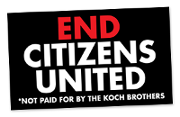Biblio
(1984). Common LISP: The Language.
(1993). Communicating at Work.
Basics of conflict resolution include: supportiveness, positiveness, equality.
(1986). Communication and Community: implications of Martin Buber's Dialogue.
"Shunning has been used for centuries as a paradoxical technique of collectively disciplining a person to bring him or her back into the group. This method may be the lesser of evils, however. As one my friends keenly observed, shunning is better than death, which has been used in some groups to eliminate the deviant. Given these two bleak choices, most of us would probably choose being ignored, But we should not minimize the pain one can feel from such exclusion. As William james stated, there is no more fiendish behavior than to act as if 'another did not exist.'"
(1994). Competing for the Future.
"There beats in every person the heart of an explorer. The joy of discovery may be found in the pages of a new cookbook, in a brochure of exotic vacations, in an architect's plans for a custom-built home, in the trek to a remote trout stream, in the first run down a virgin-powdered ski slope, by the opportunity to explore the unfamiliar. Thus, it's not surprising that when a company's mission is largely undifferentiated from that of its competitors, employees may be less than inspired." (p. 132)
(1908). The complete works of George Eliot....
"Perhaps here lay the secret of the hardness he had accused himself of; he had too little fellow-feeling with the weakness that errs in spite of foreseen consequences. Without this fellow-feeling, how are we to get enough patience and charity towards our stumbling, falling companions in the long and changeful journey? And there is but one way in which a strong, determined soul can learn it—by getting his heart-strings bound round the weak and erring, so that he must share not only the outward consequence of their error, but their inward suffering." (p. 309)
(1977). Computer Data Structures.
(1982). The Computer Establishment.
"Computing is a technology with many paths to follow; at each fork there is vigorous dissension among the brightest practitioners. We need to preserve that dissension, to offer scientists and businessmen a reasonable chance to pursue whatever goal seems promising and customers the greatest possible opportunity to choose their supplier." (p. 408)
(1993). Computer Ethics.
(1976). Computer Power and Human Reason.
(1981). Concepts in Discrete Mathematics.
(1996). Concepts of Programming Languages.
(1978). Conceptual blockbusting : a pleasurable guide to better problem solving.
"Most people are not happy with criticism and, to make matters worse, are somewhat unsure of the quality of their own ideas. They therefore require a supportive environment in which to work."
(1994). Conquering C++ Pointers.
(1988). The Constraints of Corporate Tradition: Doing the Correct Thing Not Just What the Past Dictates.
But when boosting productivity comes to mean in practice nothing more than an efficiency-driven effort to cut costs and do better with line workers what is now being done, we can watch the coral build up before our very eyes. In an earlier environment, the link between old-fashioned, direct labor-based productivity and competitive strength was obvious and immediate. Today, that linkage is more complicated and less certain. Doing the right things is every bit as important as doing things right. Time was, we could think of direct-labor productivity as a pretty fair approximation of competitiveness and be confident we were on the mark. No longer. The proxy does not hold. Forgetful that it was—and is—but a proxy that holds for some circumstances but not all, many of today's managers treat as a living fact what is no more than the hard shell of past experience.
So it is with most of the maps by which managers steer. What was once known to be an artifice, though no less useful for that, gradually loses its air of being an imaginatively constructed thing and, equally gradually, takes on the air of being something real and hard and concrete in its own right." (p. 13)
So it is with most of the maps by which managers steer. What was once known to be an artifice, though no less useful for that, gradually loses its air of being an imaginatively constructed thing and, equally gradually, takes on the air of being something real and hard and concrete in its own right." (p. 13)
(C)2014 CC-BY-NC 3.0, workcreatively.org











 ]
]